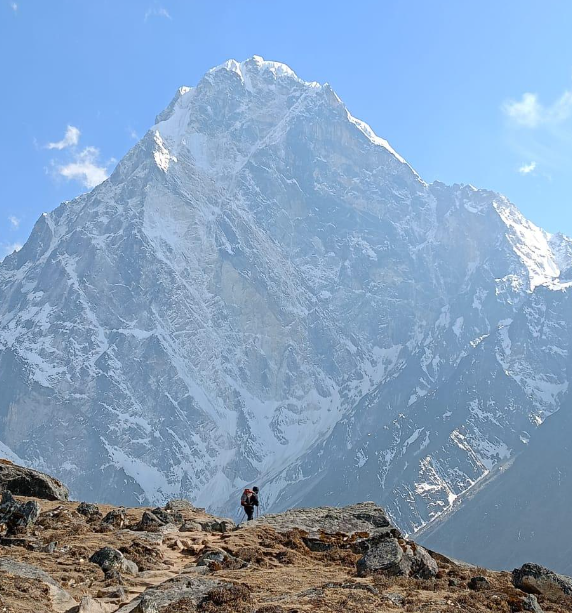The journey to Everest Base Camp (EBC) is a dream for many adventure enthusiasts. Standing at the foot of the world’s highest mountain, surrounded by towering peaks and glaciers, is an experience like no other. This comprehensive guide will provide you with all the essential information you need to prepare for and successfully complete the trek to Everest Base Camp, ensuring you make the most of this incredible journey.
Why Trek to Everest Base Camp?
Trekking to Everest Base Camp is not just about the destination; it’s about the journey. Along the way, you’ll pass through picturesque Sherpa villages, cross suspension bridges over roaring rivers, and walk alongside yaks carrying goods along ancient trade routes. You’ll also have the chance to experience the rich culture and warm hospitality of the Sherpa people, visit ancient monasteries, and witness some of the most breathtaking landscapes on Earth.
When to Go: The Best Time to Trek
The best time to trek to Everest Base Camp is during the pre-monsoon (March to May) and post-monsoon (September to November) seasons. During these times, the weather is relatively stable, the skies are clear, and the temperatures are moderate. The pre-monsoon season is ideal for those who want to see the region’s famous rhododendrons in bloom, while the post-monsoon season offers crisp air and clear mountain views.
Preparing for the Trek
Proper preparation is crucial for a successful trek to Everest Base Camp. Here are some key factors to consider:
- Physical Fitness: The trek is physically demanding, with long days of walking at high altitudes. It’s essential to be in good physical condition. Engage in regular cardio exercises, strength training, and hiking with a backpack to prepare your body.
- Acclimatization: The risk of altitude sickness is real. The trek involves significant altitude gain, so it’s crucial to acclimatize properly. This means spending a few extra days at certain points along the trek to allow your body to adjust to the lower oxygen levels.
- Gear and Equipment: Invest in quality trekking gear. Essentials include a good pair of trekking boots, warm clothing (including a down jacket), a reliable backpack, trekking poles, and a sleeping bag. Don’t forget a good pair of sunglasses, sunscreen, and a hat to protect against the strong UV rays at high altitudes.
- Permits and Regulations: Trekkers need two main permits: the Sagarmatha National Park Entry Permit and the Khumbu Pasang Lhamu Rural Municipality Permit. These can be obtained in Kathmandu or at the park’s entry point.
The Trekking Route: A Day-by-Day Breakdown
Day 1: Arrival in Kathmandu
Your journey begins with your arrival in Kathmandu, the bustling capital of Nepal. Take some time to explore the city’s vibrant markets, ancient temples, and historic sites. Overnight in Kathmandu.
Day 2: Flight from Kathmandu to Lukla and Trek to Phakding
A thrilling 30-minute flight brings you to Lukla, the gateway to the Everest region. From Lukla, a gentle trek takes you to Phakding, a small village along the Dudh Koshi River. (2,610 m / 8,563 ft)
Day 3: Phakding to Namche Bazaar
The trail to Namche Bazaar, the heart of the Khumbu region, involves crossing several suspension bridges and entering Sagarmatha National Park. Namche is a bustling Sherpa town with plenty of shops, cafes, and internet access. (3,440 m / 11,286 ft)
Day 4: Acclimatization Day in Namche Bazaar
To acclimatize, take a short hike to Everest View Hotel or Khumjung Village. Explore the Sherpa Culture Museum and local markets. Overnight in Namche Bazaar.
Day 5: Namche Bazaar to Tengboche
The trail to Tengboche offers stunning views of Everest, Lhotse, Nuptse, and Ama Dablam. Visit the famous Tengboche Monastery, the largest in the Khumbu region. (3,860 m / 12,664 ft)
Day 6: Tengboche to Dingboche
Trek through forests of rhododendron and cross the Imja Khola to reach Dingboche, a beautiful village surrounded by fields enclosed by stone walls. (4,410 m / 14,470 ft)
Day 7: Acclimatization Day in Dingboche
Another acclimatization day. You can hike up Nangkartshang Peak for a closer view of the surrounding peaks or explore the Imja Valley. Overnight in Dingboche.
Day 8: Dingboche to Lobuche
The trail continues past the Khumbu Glacier and memorials for fallen climbers. The landscape becomes more rugged as you approach Lobuche. (4,940 m / 16,207 ft)
Day 9: Lobuche to Gorak Shep and Everest Base Camp, Return to Gorak Shep
An early start takes you to Gorak Shep, the last stop before Everest Base Camp. After a quick rest, continue to Everest Base Camp, where you can marvel at the Khumbu Icefall and the climbers’ tents. Return to Gorak Shep for the night. (5,164 m / 16,942 ft)
Day 10: Hike to Kala Patthar and Trek to Pheriche
Climb to Kala Patthar at dawn for a panoramic view of Everest and the surrounding peaks. Descend to Pheriche for the night. (4,371 m / 14,340 ft)
Day 11: Pheriche to Namche Bazaar
Retrace your steps back to Namche Bazaar, enjoying the easier descent. Overnight in Namche Bazaar.
Day 12: Namche Bazaar to Lukla
The final day of trekking brings you back to Lukla. Celebrate the completion of your journey with a group dinner. (2,860 m / 9,383 ft)
Day 13: Flight from Lukla to Kathmandu
Fly back to Kathmandu and transfer to your hotel. Enjoy the rest of the day at leisure, exploring the city or relaxing.
Day 14: Departure from Kathmandu
Transfer to the airport for your departure flight, marking the end of your unforgettable Everest Base Camp trek.
Tips for a Successful Trek
- Stay Hydrated: Drink plenty of water to help your body adjust to the altitude.
- Listen to Your Body: Don’t ignore symptoms of altitude sickness. If you feel unwell, descend immediately.
- Respect the Culture: The Everest region is rich in Sherpa culture and Buddhist traditions. Be respectful of local customs and traditions.
- Pack Light: Only bring the essentials. Remember, you’ll be carrying your gear or relying on porters.
- Enjoy the Journey: Take time to soak in the scenery, interact with locals, and savor the experience.
Conclusion
Reaching Everest Base Camp is a once-in-a-lifetime experience that challenges and rewards trekkers in equal measure. With proper preparation, respect for the environment, and an open heart, you’ll not only reach the base of the world’s highest mountain but also create memories that will last a lifetime. Whether you’re a seasoned trekker or a first-time adventurer, the trek to Everest Base Camp is an adventure you’ll never forget.












